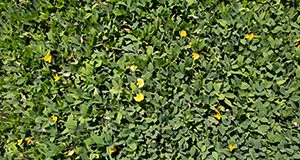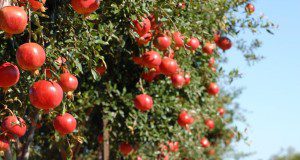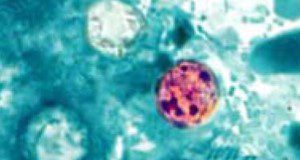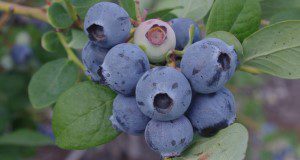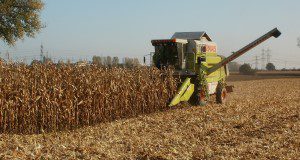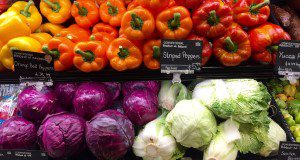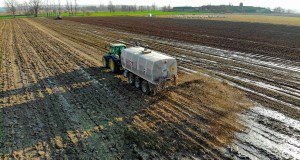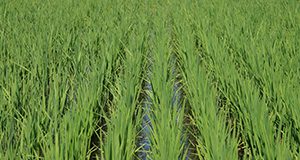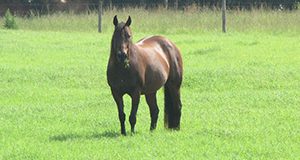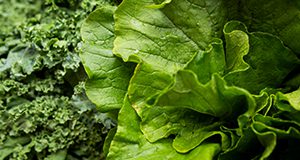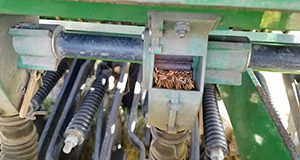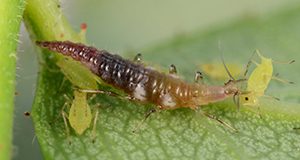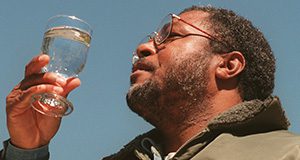Determining forage moisture is an essential procedure for estimating forage mass in pastures, determining harvesting or baling point for preserved forages, and calculating dry matter of feedstuff for total mixed rations. This 3-page document discusses methods and pieces of equipment available to estimate forage moisture. Written by M. Wallau and J. Vendramini, and published by the UF/IFAS Agronomy Department, revised June 2019.
http://edis.ifas.ufl.edu/ag181
Tag: major revision
La Granada en Florida: Una fruta de arbol para Florida?
El potencial económico en la producción comercial para el cultivo de granadas en Florida es actualmente desconocido en este momento. La investigación científica continúa sobre la posibilidad de encontrar variedades de granadas que puedan crecer en Florida. Las condiciones ambientales, con una alta temporada húmeda en la Florida, y un clima caluroso, son factores que son favorables para las enfermedades en las granadas y eso reduce la calidad de esta fruta, especialmente para las variedades de temporada tardía como la variedad ‘Wonderful’. ‘Wonderful’ es el principal cultivar comercial que se originó en la Florida. Para reducir las enfermedades y evitar la competencia de comercialización con las granadas de California, la investigación para la producción de granadas en la Florida debe centrarse en buscar variedades de temporada temprana que puedan cosecharse en julio y agosto. This six-page document is the Spanish translation of HS44, The Pomegranate. Written by Ali Sarkhosh and Jeff Williamson, translated by Eva Pabon, and published by the UF/IFAS Horticultural Sciences Department.
http://edis.ifas.ufl.edu/hs294
Protecting Perishable Foods During Transport by Truck and Rail
The importance of protecting perishable foods from loss of quality during transport has long been recognized. Increased recognition of the importance of the transport link in the food distribution cold chain in securing the safety of perishable foods has more recently become as well recognized.
This updated edition reflects the dynamic changes and innovations in the handling and transportation of perishable foods. Some of these include improved insulation and air movement, microprocessors for more efficient refrigeration, expert systems to control the transport environment and conserve fuel energy, and the use of telematics to monitor and control the performance of refrigerated vehicles during transit. This edition includes descriptions and recommendations for food transported over the road and by rail in marine containers, as well as in railcars. This 214-page revision was written by J. K. Brecht, Steven A. Sargent, Patrick E. Brecht, Jorge Saenz, and Leonard Rodowick and published by the UF/IFAS Horticultural Sciences Department in cooperation with the USDA AMS Transportation Services Division.
http://edis.ifas.ufl.edu/hs1328
Preventing Foodborne Illness: Cyclosporiasis
Cyclosporiasis is an intestinal illness caused by the microscopic parasite Cyclospora cayetanensis. People can become infected with Cyclospora by consuming food or water contaminated with the parasite. People living or traveling in countries where cyclosporiasis is endemic may be at increased risk for infection. This 6-page publication is part of the Preventing Foodborne Illness series and describes symptoms and strategies for cyclosporiasis prevention for farmers, restaurants and retailers, and consumers. This major revision was written by Christopher R. Pabst, Jaysankar De, Renée Goodrich-Schneider, and Keith R. Schneider and published by the UF/IFAS Food Science and Human Nutrition Department.
http://edis.ifas.ufl.edu/fs130
Food Safety on the Farm: Good Agricultural Practices and Good Handling Practices: Transportation
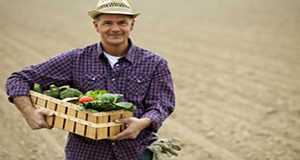
Good agricultural practices (GAPs) and good handling practices (GHPs) encompass the general procedures growers, packers, and processors of fresh fruits and vegetables should follow to ensure the safety of their product. GAPs usually address preharvest practices (i.e., in the field), while GHPs cover postharvest practices, including packing and shipping. This 3-page fact sheet covers the GAPs of transporting crops. This major revision is a part of the Food Safety on the Farm series and was written by Christopher R. Pabst, Jaysankar De, Alina Balaguero, Jessica Lepper, Renée Goodrich-Schneider, and Keith R. Schneider and published by the UF/IFAS Food Science and Human Nutrition Department.
http://edis.ifas.ufl.edu/fs151
Southern Highbush Blueberry Cultivars from the University of Florida
Southern highbush blueberries combine the fruit quality and productivity of highbush blueberries with the low chilling requirement necessary to produce a crop in the Florida climate. Written by J. G. Williamson, D. A. Phillips, P. M. Lyrene, and P. R. Munoz and published by the UF/IFAS Horticultural Sciences Department, this 13-page major revision describes current and historical southern highbush blueberry cultivars released by the University of Florida.
http://edis.ifas.ufl.edu/hs1245
Food Safety on the Farm: Good Agricultural Practices and Good Handling Practices: Field Sanitation
Good Agricultural Practices (GAPs) and Good Handling Practices (GHPs) encompass the general procedures that growers, packers, and processors of fresh fruits and vegetables should follow to ensure the safety of their product. GAPs usually deal with preharvest practices (i.e., in the field), while GHPs cover postharvest practices, including packing and shipping. This 5-page fact sheet covers harvest practices associated with sanitation in the field, including basic principles for microbial food safety and control of potential hazards. This major revision is a part of the Food Safety on the Farm series and was written by Jessica Lepper, Jaysankar De, Christopher Pabst, Renée Goodrich-Schneider, and Keith Schneider and published by the UF/IFAS Food Science and Human Nutrition Department.
http://edis.ifas.ufl.edu/fs160
Food Safety on the Farm: Good Agricultural Practices and Good Handling Practices: Traceback
Good Agricultural Practices (GAP) and Good Handling Practices (GHP) are voluntary audits that verify fruits and vegetables are produced, packed, handled, and stored as safely as possible to keep the risks of microbial food safety hazards at the minimal level. Good Agricultural Practices usually deal with preharvest practices (i.e., in the field), while GHPs cover postharvest practices, including packing and shipping. This 3-page fact sheet in the Food Safety on the Farm series covers GAPs and GHPs relating to traceback, or the ability to track food items, such as fresh produce, back to their source. This major revision was written by Jaysankar De, Christopher R. Pabst, Alexandra S. Chang, Renée M. Goodrich-Schneider, and Keith R. Schneider and published by the UF/IFAS Food Science and Human Nutrition Department.
http://edis.ifas.ufl.edu/fs152
Food Safety on the Farm: Good Agricultural Practices and Good Handling Practices: Manure and Municipal Biosolids
Good Agricultural Practices (GAPs) and Good Handling Practices (GHPs) encompass the general procedures growers, packers, and processors of fresh fruits and vegetables should follow to ensure the safety of their product. GAPs usually deal with pre-harvest practices (i.e., in the field), while GHPs tend to cover post-harvest practices, including packing and shipping. This 5-page entry in the Food Safety on the Farm series focuses on Good Agricultural Practices, including pathogen reduction and handling and application, to control potential hazards when working with manure and biosolids. This major revision was written by Jaysankar De, Christopher R. Pabst, Jessica Lepper, Renée M. Goodrich-Schneider, and Keith R. Schneider and published by the UF/IFAS Food Science and Human Nutrition Department.
http://edis.ifas.ufl.edu/fs150
Preventing Foodborne Illness: Yersiniosis
 Yersiniosis is an infectious disease caused by the bacterium Yersinia and is typically associated with the consumption of contaminated food or liquids. Yersiniosis is characterized by common symptoms of gastroenteritis such as abdominal pain and mild fever. The bacterium is prevalent in the environment, enabling it to contaminate water and food systems. Outbreaks of yersiniosis have been associated with improperly pasteurized milk, ready-to-eat salad mix, oysters, and more commonly with consumption of undercooked meals containing pork. Yersiniosis incidents have been reported frequently in Northern Europe, Scandinavia, and Japan, and rarely in the United States. However, the reported low incidence of Yersinia in the US food supply may be underestimated due to the long incubation time and misdiagnosis of patients with Y. enterocolitica infections, along with the inability to identify the source of infection and the fact that only serious cases are reported. This 4-page major revision, written by Christopher Pabst, Jaysankar De, Aswathy Sreedharan, Correy Jones, and Keith R. Schneider and published by the UF/IFAS Food Science and Human Nutrition Department, also describes long-term effects and complications of yersiniosis, members of the population most at risk, and prevention methods.
Yersiniosis is an infectious disease caused by the bacterium Yersinia and is typically associated with the consumption of contaminated food or liquids. Yersiniosis is characterized by common symptoms of gastroenteritis such as abdominal pain and mild fever. The bacterium is prevalent in the environment, enabling it to contaminate water and food systems. Outbreaks of yersiniosis have been associated with improperly pasteurized milk, ready-to-eat salad mix, oysters, and more commonly with consumption of undercooked meals containing pork. Yersiniosis incidents have been reported frequently in Northern Europe, Scandinavia, and Japan, and rarely in the United States. However, the reported low incidence of Yersinia in the US food supply may be underestimated due to the long incubation time and misdiagnosis of patients with Y. enterocolitica infections, along with the inability to identify the source of infection and the fact that only serious cases are reported. This 4-page major revision, written by Christopher Pabst, Jaysankar De, Aswathy Sreedharan, Correy Jones, and Keith R. Schneider and published by the UF/IFAS Food Science and Human Nutrition Department, also describes long-term effects and complications of yersiniosis, members of the population most at risk, and prevention methods.
http://edis.ifas.ufl.edu/fs193
Florida 4-H Secretary Record Book
The Florida 4-H Secretary record book will provide the club secretary with an official outline for tracking all club records. This 30-page book serves as a guide and should be completed annually by the 4-H club secretary. This major revision was written by Sarah Thomas Hensley and Stacey Ellison and published by the UF/IFAS Extension 4-H Youth Development program.
http://edis.ifas.ufl.edu/4h011
Weed Management in Rice
Successful weed control is essential for economical rice production in Florida. This 6-page document discusses field sanitation and tillage, water management, and herbicides. Written by D. C. Odero and M. VanWeelden, and published by the UF/IFAS Agronomy Department, revised August 2018.
http://edis.ifas.ufl.edu/wg001
Feeding Your Baby
Feeding your baby is one of the first things you do as a parent. It is also one of the ways that you develop a relationship with this new family member. When feeding goes well, everyone in the family is happier. This 3-page publication can help you develop a close feeding relationship with your baby. The skills you learn will also help you and your child avoid conflicts over food during the toddler and preschool years. Written by Linda B. Bobroff and Nicole Owens Duffy, and published by the UF/IFAS Department of Family, Youth and Community Sciences, revised March 2019.
http://edis.ifas.ufl.edu/he964
Pastures and Forage Crops for Horses
Florida's unique climatic characteristics allow for forage production most of the year with a large variety of possible forage choices. Independent of the size of the operation and number of horses, good forage planning can help reduce feeding costs, environmental impacts, and nutritional disorders caused by high-concentrate feeding. With the exception of high-performance animals, horses can meet most of their nutritional needs from pasture. However, achieving this requires careful planning and implementation of a forage production and utilization program. This 9-page document discusses intake and nutrient requirements, pasture planning, forage species, and pasture management. Written by M. Wallau, E. L. Johnson, J. Vendramini, C. Wickens, and C. Bainum, and published by the UF/IFAS Agronomy Department, revised January 2019.
http://edis.ifas.ufl.edu/aa216
Alimentacion Saludable: Organice Su Plato
Planear sus comidas puede ayudar a controlar las porciones y la cantidad de carbohidratos que usted consume a través del día. Esto es especialmente importante si usted padece de la diabetes o si usted es una persona en alto riesgo de padecer de la diabetes. This 2-page document is the Spanish version of Healthy Eating: Create Your Plate. Written by Jennifer Hillan and Linda B. Bobroff, and published by the UF/IFAS Department of Family, Youth and Community Sciences, revised December 2018.
http://edis.ifas.ufl.edu/fy907
Calibrating Forage Seeding Equipment
Establishing forages from seeds often requires precision equipment to achieve specific seeding rates for a proper pasture stand. Most pieces of equipment have calibration charts, which are useful guides for making an initial setting. However, due to variations in seed size, purity, moisture content, equipment performance, ground speed, and other factors, calibrating equipment prior to each use is recommended. This 5-page document discusses a few calibration techniques for drills and broadcast spreaders. Written by Marcelo Wallau, Joao Vendramini, and Ed Jennings, and published by the UF/IFAS Agronomy Department, revised November 2018.
http://edis.ifas.ufl.edu/ag158
Brazilian Peppertree Control
Brazilian peppertree is encroaching upon nearly all terrestrial ecosystems in central and south Florida. This 5-page document discusses the plant's habitat, identification, characteristics, and biology as well as control methods. Written by K. T. Gioeli, S. F. Enloe, C. R. Minteer, and K. A. Langeland, and published by the UF/IFAS Agronomy Department, revised November 2018.
http://edis.ifas.ufl.edu/aa219
Healthy Living: Monitoring Your Blood Pressure at Home
Do you think your blood pressure may be too high? Have you been diagnosed with high blood pressure? In either case, it is recommended that you monitor your blood pressure at home and get it checked at the doctor's office. This 4-page document discusses how to monitor your blood pressure at home. Written by Linda B. Bobroff, and published by the UF/IFAS Department of Family, Youth and Community Sciences, revised November 2018.
http://edis.ifas.ufl.edu/fy1126
Natural Products for Managing Landscape and Garden Pests in Florida
Pest control professionals and homeowners throughout Florida and the southeastern US are seeking effective options that are safer for people and the environment than some conventional synthetic pesticides. There is also rising interest in organic gardening, which relies on natural pesticides. This 13-page fact sheet describes natural products for use in residential landscapes and gardens. Written by Matthew A. Borden, Eileen A. Buss, Sydney G. Park Brown, and Adam G. Dale, and published by the UF/IFAS Department of Entomology and Nematology, revised September 2018.
http://edis.ifas.ufl.edu/in197
Alimentacion Saludable: Liquidos
Más de la mitad del peso del cuerpo humano adulto es agua. El agua transporta nutrientes a las células en nuestros cuerpos y remueve los residuos. Nuestros cuerpos no podrían funcionar sin una fuente de agua adecuada. This 2-page fact sheet discusses the importance of water, effects of dehydration, implications for older persons, suggested fluid intake, and ways to include more water in one’s diet. It is the Spanish version of Healthy Eating: Fluids. Written by Linda B. Bobroff, Luisa Oliver-Cordero, and Emily Minton, and published by the UF/IFAS Department of Family, Youth and Community Sciences, revised September 2018.
http://edis.ifas.ufl.edu/fy071
